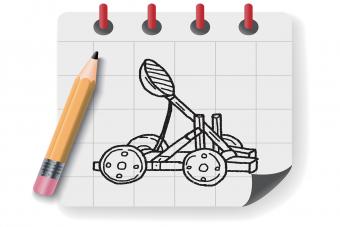
The Playskool Giraffe Walker is a vintage toy that would be perfect for toy collectors and nostalgia buffs alike.
Playskool History
Playskool began in 1928. While working for a lumber company, a former schoolteacher developed a line of wooden toys she had first planned for classroom use. The toys were designed to be durable and educational while helping children develop better coordination and thinking skills. Although the Playskool of today features primarily plastic-based toys in its product lines, throughout its first decades, the company maintained this focus on wooden toys.
The Playskool Giraffe Walker
Playskool released the Giraffe Walker in 1967 at a suggested retail price of $4.99. Unlike Playskool's blocks and pegboards of the era, the toy didn't require children to exercise their minds to puzzle out solutions, but it still held true to the company's founding principle of helping children develop coordination. It also likely led to hours of imaginative play.
It can be difficult to dig up information about the toy, and not a lot is known about it beyond its basic appearance. There were several ways to interact with the toy. Children could sit on the giraffe and ride it, they could pull it, or they could hold on to the back of the seat and push it ahead of them while using it as a walker.
The giraffe's body is the seat with a neck and head in the front. It stands on four wheels. The entire toy is wooden, with the exception of the blue plastic wheels and a blue fabric string at the front. The Walker is primarily yellow with red accents, and the giraffe has a playful, smiling expression.
Buying the Giraffe Walker
If it's difficult to find much information about the Playskool Giraffe Walker, it can be equally difficult to actually find one for sale. A search for the toy on eBay is more likely to bring up sellers of vintage ads featuring the product. If you're in the market for one, keep an eye on eBay and other auction sites. You may have more success looking locally at antique shops, estate sales, yard sales and flea markets. If you find one that is in poor condition, painting and repair are always options to make it look like new. However, as with all antiques, restoration will lower the value of the item, so it depends on whether you are purchasing the toy as an investment or for nostalgic display purposes.







